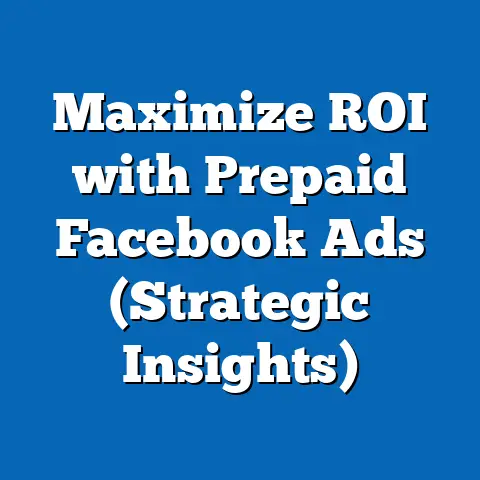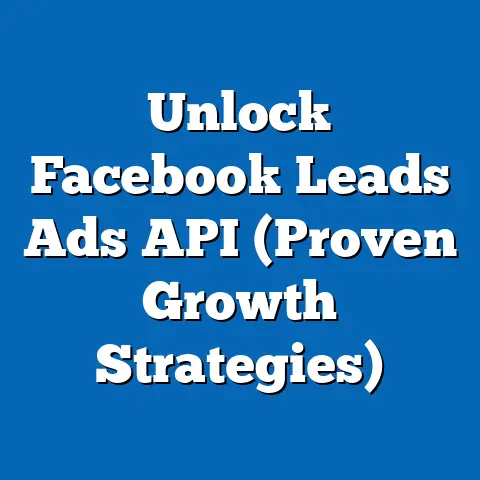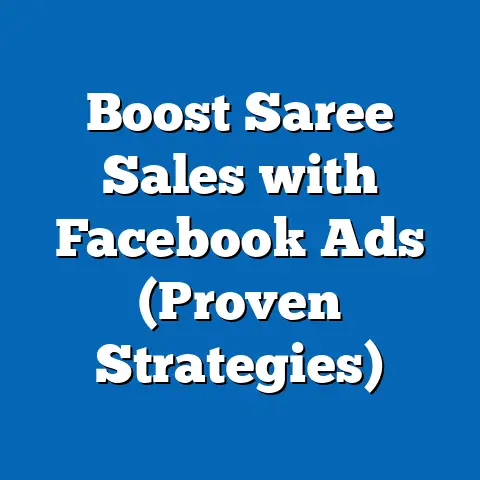Transform Russian Ads on Facebook for Maximum Impact (Proven Strategies)
Would you rather invest your marketing budget in a traditional advertising campaign with uncertain returns, or leverage the power of Facebook ads to reach millions of potential customers in Russia with proven strategies for maximum impact? It’s a question every marketer targeting the Russian market should be asking themselves.
I’ve spent years crafting and optimizing Facebook ad campaigns, and I can tell you firsthand: a generic, one-size-fits-all approach simply won’t cut it when it comes to the Russian market. What resonates in the US or Europe might completely fall flat in Russia. To truly connect with Russian consumers and drive results, you need a tailored strategy that understands their unique cultural context, preferences, and online behavior.
In this guide, I’ll walk you through the key steps to transform your Russian Facebook ads from ineffective to high-performing. We’ll dive into everything from crafting compelling ad copy that speaks directly to the Russian audience to leveraging the power of A/B testing to optimize your campaigns for maximum impact. Get ready to unlock the potential of Facebook advertising in the Russian market!
1. Understanding the Russian Market: A Foundation for Success
Before you even think about crafting an ad, you need to deeply understand the Russian market. This isn’t just about knowing the demographics; it’s about understanding the cultural nuances, consumer behaviors, and digital trends that shape the online landscape in Russia.
Key Characteristics of the Russian Market:
- Demographics: Russia is a vast country with a diverse population. According to Rosstat, the Federal State Statistics Service, the median age is around 40, with a significant urban population. Understanding the specific demographics you’re targeting within Russia is crucial. Consider factors like income level, education, and geographic location.
- Consumer Behavior: Russian consumers are increasingly sophisticated and digitally savvy. They value quality, reliability, and value for money. Brand loyalty can be strong, but they are also open to trying new products and services, especially if recommended by trusted sources or influencers.
- Digital Trends: Internet penetration in Russia is high, with a large percentage of the population active on social media. While Facebook is present, it’s important to note that it’s not the dominant social platform like it is in some other countries. VKontakte (VK) and Odnoklassniki (OK) are the most popular social networks in Russia. However, Facebook still holds significant sway, particularly among younger, more affluent, and globally-minded audiences.
The Importance of Cultural Nuances:
Advertising in Russia requires a deep understanding of cultural nuances. What might be considered acceptable or even humorous in one culture could be offensive or inappropriate in another.
- Language: This might seem obvious, but it’s worth emphasizing: your ads must be in fluent, natural-sounding Russian. Machine translations are often clunky and can make your brand look unprofessional. Invest in professional translation and localization services.
- Humor: Humor can be a powerful tool, but it’s also a potential minefield. Russian humor often relies on irony, satire, and self-deprecation. Avoid jokes that could be interpreted as insensitive or offensive.
- Emotional Appeals: Russian consumers are often drawn to emotional storytelling. Ads that evoke feelings of nostalgia, patriotism, or family values can be particularly effective.
- Respect for Authority: In some contexts, referencing respected figures or institutions can lend credibility to your message.
Facebook’s Presence in Russia: Statistics and Relevance:
While not the largest social media platform in Russia, Facebook still holds a significant position.
- Audience Size: While exact figures fluctuate, Facebook has a substantial user base in Russia, numbering in the millions. This provides a significant opportunity to reach a specific segment of the population.
- Target Audience: Facebook users in Russia tend to be younger, more affluent, and more internationally-minded than users of other platforms. This makes Facebook a particularly attractive platform for businesses targeting these demographics.
- Business Opportunities: Despite the presence of local social networks, Facebook offers unique advantages for businesses looking to reach a global audience or target specific niche markets within Russia.
Takeaway: Before launching any Facebook ad campaign in Russia, invest time in understanding the local market. Research demographics, consumer behaviors, and digital trends. Pay close attention to cultural nuances and adapt your messaging accordingly.
2. Crafting the Perfect Ad Copy: Speaking the Language of Your Audience
Your ad copy is the first (and sometimes only) impression you make on potential customers. In the Russian market, it’s crucial to craft ad copy that not only grabs attention but also resonates with the cultural values and preferences of your target audience.
Principles of Effective Ad Copywriting for Russian Audiences:
- Speak Their Language (Literally): This goes beyond just translating your existing ad copy. You need to localize it. This means adapting the language, tone, and style to fit the nuances of the Russian language and culture.
- Focus on Benefits, Not Just Features: Highlight how your product or service will improve the lives of your target audience. What problems does it solve? What benefits does it offer?
- Use a Conversational Tone: Avoid overly formal or technical language. Aim for a tone that is friendly, approachable, and relatable.
- Create a Sense of Urgency: Encourage immediate action by using phrases like “Limited Time Offer,” “Sale Ends Soon,” or “Don’t Miss Out!”
- Include a Clear Call to Action: Tell people exactly what you want them to do. Use strong action verbs like “Shop Now,” “Learn More,” or “Sign Up Today.”
Examples of Successful Ad Copy in Russian:
Let’s look at a hypothetical example. Imagine you’re selling high-quality leather goods. A generic ad might say: “Premium Leather Wallets. Shop Now!”
A more effective, localized ad copy for the Russian market might be:
“Ищете надежный и стильный кошелек из натуральной кожи? Наши кошельки ручной работы сочетают в себе традиционное мастерство и современный дизайн. Подчеркните свой безупречный вкус! Купить сейчас и получите бесплатную доставку по всей России! (Looking for a reliable and stylish wallet made of genuine leather? Our handmade wallets combine traditional craftsmanship and modern design. Emphasize your impeccable taste! Buy now and get free shipping throughout Russia!)”
Notice the difference? This ad copy:
- Uses evocative language (“impeccable taste”).
- Highlights traditional craftsmanship, appealing to a value often appreciated in Russian culture.
- Offers a tangible benefit (free shipping throughout Russia).
- Uses a clear and direct call to action.
The Importance of Culturally Relevant Language:
Using culturally relevant language is key to connecting with your audience on an emotional level.
- Avoid Stereotypes: Be mindful of cultural stereotypes and avoid perpetuating them in your ads.
- Use Idioms and Expressions Carefully: Idioms and expressions can add color to your ad copy, but they can also be easily misinterpreted if not used correctly.
- Consider the Context: The language you use should be appropriate for the context of your ad and the platform on which it’s being displayed.
Humor and Emotional Appeals:
As mentioned earlier, humor and emotional appeals can be powerful tools, but they must be used with caution.
- Test Your Humor: Before launching a campaign that relies heavily on humor, test it with a small group of people from your target audience to get their feedback.
- Be Authentic: Emotional appeals should feel genuine and authentic. Avoid being overly sentimental or manipulative.
Takeaway: Crafting effective ad copy for the Russian market requires a deep understanding of the language, culture, and values of your target audience. Focus on benefits, use a conversational tone, and create a sense of urgency. Always localize your ad copy and be mindful of cultural nuances.
3. Visual Elements that Captivate: Seeing is Believing
In the visually driven world of social media, your ad’s visuals are just as important as the copy. Compelling visuals can grab attention, communicate your message quickly and effectively, and ultimately drive conversions.
The Role of Visuals in Facebook Ads:
- First Impressions Matter: Your visual is often the first thing people see, so it needs to be eye-catching and relevant to your target audience.
- Communicate Quickly: Visuals can convey complex information in a matter of seconds, making them ideal for capturing attention in a fast-paced social media environment.
- Build Brand Recognition: Consistent use of visuals can help build brand recognition and loyalty.
Tips on Selecting the Right Colors, Fonts, and Images:
- Colors: Consider the cultural associations of different colors. For example, red is often associated with passion and energy, while blue is associated with trust and stability.
- Fonts: Choose fonts that are easy to read and that reflect the personality of your brand. Avoid overly ornate or decorative fonts.
- Images: Use high-quality images that are relevant to your product or service and that resonate with your target audience. Avoid using stock photos that look generic or inauthentic.
- Video Content: Video is incredibly engaging. Short, impactful videos showcasing your product or service in action can be highly effective.
Case Studies of Successful Ad Campaigns with Compelling Visuals:
Let’s consider a hypothetical example of a successful ad campaign for a travel agency targeting Russian tourists.
- The Visual: The ad features a stunning image of the Swiss Alps, bathed in golden sunlight. The image evokes feelings of adventure, tranquility, and natural beauty.
- The Result: The ad generated a high click-through rate and a significant increase in bookings to Switzerland.
Key Takeaways:
- Authenticity: Use real photos of your product/service or relatable lifestyle imagery.
- High Quality: Invest in professional photography or video production.
- Relevance: Ensure your visuals directly relate to your ad copy and target audience.
- Aesthetics: Pay attention to color palettes, composition, and overall visual appeal.
Takeaway: Visuals are a critical component of successful Facebook ads. Choose colors, fonts, and images that are relevant to your target audience and that reflect the personality of your brand. Use high-quality visuals that are eye-catching and engaging. Don’t underestimate the power of video content.
4. Targeting Your Audience: Precision is Key
Even the most compelling ad copy and stunning visuals will be wasted if you’re not targeting the right audience. Facebook offers a wide range of targeting options that allow you to reach specific segments of the Russian population based on their interests, behaviors, demographics, and more.
Facebook Targeting Options for Russian Audiences:
- Location: Target people who live in specific cities, regions, or countries within Russia.
- Demographics: Target people based on age, gender, education, income, and other demographic factors.
- Interests: Target people based on their interests, hobbies, and passions.
- Behaviors: Target people based on their online and offline behaviors, such as purchase history, travel habits, and device usage.
- Custom Audiences: Create custom audiences based on your existing customer data, such as email lists or website visitors.
- Lookalike Audiences: Create lookalike audiences that are similar to your existing customers.
Audience Segmentation: Creating Targeted Ad Sets:
The key to effective targeting is audience segmentation. This means dividing your target audience into smaller, more specific groups based on their shared characteristics.
- Example: Let’s say you’re selling fitness equipment. You could segment your audience based on their fitness interests (e.g., weightlifting, yoga, running), their age, and their location. You could then create separate ad sets for each segment, with ad copy and visuals that are tailored to their specific interests and needs.
Retargeting Strategies: Re-Engaging Users:
Retargeting allows you to re-engage users who have previously interacted with your ads or visited your website. This can be a highly effective way to drive conversions.
- Website Visitors: Retarget people who have visited specific pages on your website.
- Ad Engagers: Retarget people who have liked, commented on, or shared your ads.
- Video Viewers: Retarget people who have watched your videos.
Takeaway: Targeting is a critical component of successful Facebook ads. Use Facebook’s targeting options to reach specific segments of the Russian population based on their interests, behaviors, demographics, and more. Segment your audience into smaller, more specific groups and create targeted ad sets for each segment. Leverage retargeting strategies to re-engage users who have previously interacted with your ads or visited your website.
5. Leveraging A/B Testing for Optimization: The Scientific Approach to Ad Success
A/B testing, also known as split testing, is a powerful technique for optimizing your Facebook ad campaigns. It involves creating two or more versions of an ad, each with a different element (e.g., ad copy, visual, call to action), and then showing each version to a random sample of your target audience. By tracking the performance of each version, you can identify which elements are most effective and then use that information to improve your overall campaign performance.
The Concept of A/B Testing:
- Control vs. Variation: You start with a control ad (the original version) and then create a variation with a single change.
- Random Assignment: Facebook randomly assigns users to see either the control or the variation.
- Data Collection: You track key metrics like click-through rate, conversion rate, and cost per acquisition for each version.
- Analysis and Iteration: You analyze the data to determine which version performed better and then use that information to create a new and improved version.
A Step-by-Step Guide to Conducting A/B Tests on Facebook Ads:
- Identify a Variable to Test: Choose one element of your ad to test, such as the headline, the image, or the call to action.
- Create Two Versions of Your Ad: Create two versions of your ad, each with a different variation of the element you’re testing.
- Set Up Your A/B Test: Use Facebook’s A/B testing tool to set up your test.
- Run Your Test: Run your test for a sufficient amount of time (typically at least a week) to gather enough data to draw meaningful conclusions.
- Analyze Your Results: Analyze the data to determine which version performed better.
- Implement Your Findings: Use the information you’ve gathered to improve your overall campaign performance.
Elements to A/B Test:
I once worked on a campaign where we A/B tested two different images: one featuring a product shot and another featuring a lifestyle shot. The lifestyle shot, which showed people using the product in a real-world setting, significantly outperformed the product shot. This insight helped us to improve the overall performance of the campaign by focusing on visuals that resonated with our target audience on an emotional level.
Takeaway: A/B testing is a powerful tool for optimizing your Facebook ad campaigns. By systematically testing different elements of your ads, you can identify which ones are most effective and then use that information to improve your overall campaign performance.
6. Utilizing Facebook Insights and Analytics: Data-Driven Decision Making
Facebook Insights and Analytics are your secret weapons for understanding how your ads are performing and making data-driven decisions to improve your results. These tools provide a wealth of information about your audience, your ad performance, and your overall campaign effectiveness.
The Importance of Analytics:
- Measure Performance: Analytics allow you to track key metrics such as reach, engagement, and conversion rates.
- Identify Trends: Analytics can help you identify trends in your data that can inform your future campaigns.
- Optimize Campaigns: Analytics provide the data you need to optimize your campaigns for maximum impact.
Interpreting Facebook Insights:
- Reach: The number of people who saw your ad.
- Impressions: The number of times your ad was displayed.
- Engagement: The number of people who interacted with your ad (e.g., likes, comments, shares).
- Click-Through Rate (CTR): The percentage of people who saw your ad and clicked on it.
- Conversion Rate: The percentage of people who clicked on your ad and then completed a desired action (e.g., made a purchase, signed up for a newsletter).
- Cost Per Click (CPC): The average cost you paid for each click on your ad.
- Cost Per Acquisition (CPA): The average cost you paid for each conversion.
Actionable Strategies for Adjusting Campaigns:
- Low CTR: If your CTR is low, try testing different headlines, images, or ad copy.
- High CPC: If your CPC is high, try refining your targeting or bidding strategy.
- Low Conversion Rate: If your conversion rate is low, try improving your landing page or simplifying your checkout process.
- Poor Engagement: Try different ad formats, engaging questions, or running contests.
Takeaway: Facebook Insights and Analytics are essential tools for measuring ad performance and making data-driven decisions. Track key metrics, identify trends, and use that information to optimize your campaigns for maximum impact. Don’t just set it and forget it – continuously monitor and adjust your campaigns based on the data.
7. Best Practices for Ad Scheduling and Budgeting: Maximizing ROI
Even with a compelling ad and precise targeting, your campaign’s success hinges on strategic ad scheduling and budgeting. Understanding when your target audience is most active and allocating your budget effectively are critical for maximizing your return on investment (ROI).
Optimal Ad Scheduling Strategies:
- Identify Peak Activity Times: Use Facebook Insights to identify the times of day and days of the week when your target audience is most active on Facebook. This data is gold!
- Schedule Ads Accordingly: Schedule your ads to run during these peak activity times to maximize your reach and engagement.
- Consider Time Zones: If you’re targeting a wide geographic area, be sure to consider time zones when scheduling your ads.
Budgeting Strategies:
- Daily vs. Lifetime Budgets: Daily budgets allow you to spend a fixed amount each day, while lifetime budgets allow you to spend a fixed amount over the entire duration of your campaign.
- Start Small: Begin with a small budget and gradually increase it as you see positive results.
- Monitor Performance: Continuously monitor your campaign performance and adjust your budget accordingly.
- Bid Strategy: Experiment with different bidding strategies to see which one works best for your campaign goals.
The Importance of Timing in Ad Placements:
- News Feed: The News Feed is the most common ad placement on Facebook.
- Right Column: Right Column ads are smaller and less prominent than News Feed ads.
- Audience Network: The Audience Network allows you to extend your reach beyond Facebook by showing your ads on other websites and apps.
- Mobile vs. Desktop: Consider whether your target audience is more likely to be using Facebook on their mobile devices or on their desktop computers.
- Instagram: If your target audience is active on Instagram, consider running ads on Instagram as well.
Takeaway: Ad scheduling and budgeting are critical components of successful Facebook ads. Use Facebook Insights to identify peak activity times and schedule your ads accordingly. Experiment with different budgeting strategies and continuously monitor your campaign performance. Consider the timing of your ad placements and choose the placements that are most likely to reach your target audience.
Conclusion: The Path to Success in Russian Facebook Advertising
Transforming your Russian Facebook ads for maximum impact requires a holistic approach that encompasses understanding the local market, crafting compelling ad content, targeting the right audience, leveraging A/B testing, utilizing Facebook Insights, and implementing effective ad scheduling and budgeting strategies.
Remember:
- Cultural Sensitivity is Key: Adapt your messaging to resonate with the values and preferences of Russian consumers.
- Data Drives Decisions: Continuously monitor your campaign performance and make data-driven adjustments.
- Testing is Essential: A/B test different elements of your ads to identify what works best.
- Patience and Persistence: Building a successful Facebook ad campaign takes time and effort. Don’t get discouraged if you don’t see results immediately.
By following the strategies outlined in this guide, you can unlock the potential of Facebook advertising in the Russian market and achieve your marketing goals.
Call to Action:
I encourage you to take action and experiment with the strategies outlined in this article in your own Facebook ad campaigns targeting Russian consumers. Share your experiences and results in the comments section or on social media platforms. I’m eager to hear about your successes and help you overcome any challenges you may encounter. Let’s work together to unlock the full potential of Facebook advertising in the Russian market!





